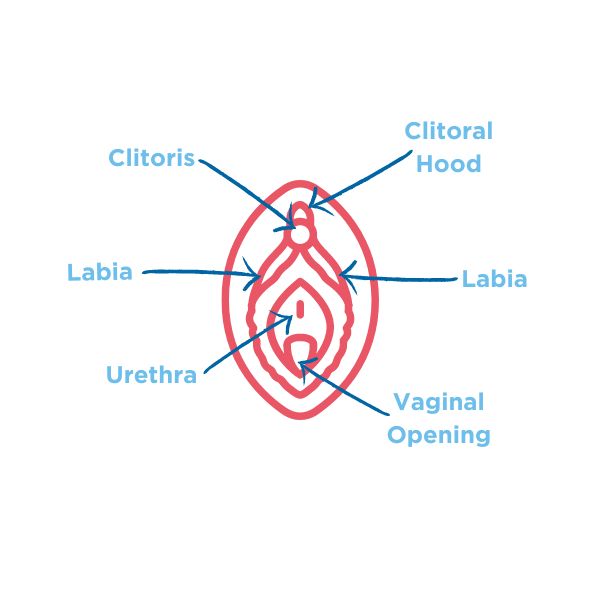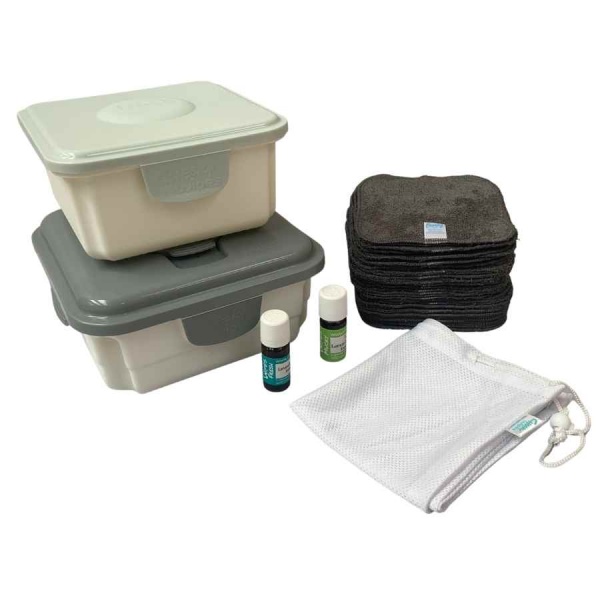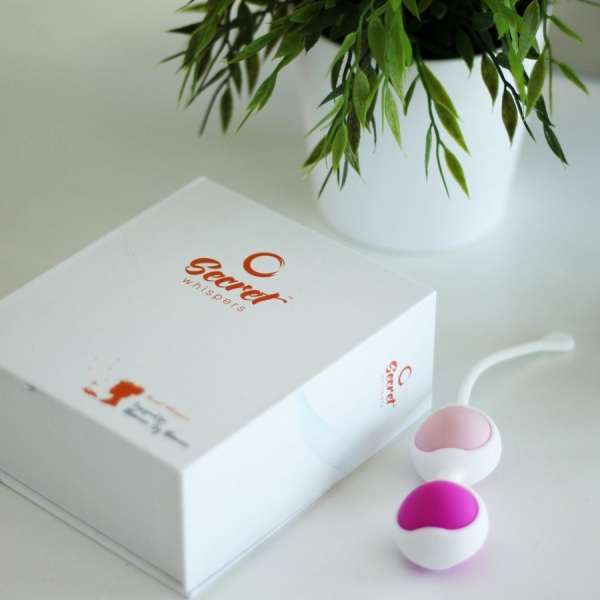What Does a Normal Vagina and Vulva Look Like?
As you know if you read our blog often, our content ideas come from many different places. Sometimes it's a Trustpilot Review or comments on our social media posts.
However this one came from the email below and it gave me perimenopausal RAGE!

'Cosmetic gynecological surgery'
Who the flip needs to 'FIX' perfectly healthy, normal vulvas? There's no 'cosmetic beauty standard' for vulvas to attain. The only exception that I can see perhaps is in cases of injury or female genital mutiliation.
The images we see in magazines, on social media, and in adult content can leave us with messed up ideas about what our bodies should look like and it appears that this surgeon seems to think it should include our most intimate areas.
FFS. PLEASE stop trying to make women feel insecure about what a “normal” vulva and vagina should look like. The concept of a "normal" vagina is a myth. Every vagina and vulva is unique and variations in appearance are completely natural. This blog post answers your burning questions around what does a normal vagina and vulva look like.

Anatomy of the Vagina and Vulva
First, let's clarify some terms that not everyone is aware of and are often used incorrectly.
The vagina is the internal canal including the vaginal wall which leads to the cervix , while the vulva refers to the external part of the female genitals that you can easily see, including the labia (lips), clitoris, and the vaginal opening.
Variations in the size of the labia, the shape of the clitoral hood, the amount and type of pubic hair, as well as differences in vaginal discharge and scent, are all perfectly normal. No two vulvas look exactly the same, and all variations should be celebrated rather than questioned or shamed.
It's completely normal for the labia on one person to look completely different to another labia. Healthline’s guide to vulva anatomy has some really great diagrams showing the different 'types' of labia out there, chances are one of them will look like yours!
How Many Holes Do Women Have Down There?
Unlike men, women have three holes 'down there'. The small one towards the front is the urethra which is where urine flows from.
The middle hole on female genitalia is the vagina, menstrual blood flows from this hole during the menstrual cycle and this is where sexual intercourse usually takes place.
The hole at the back is the anus which is where you poo from. The reason why women should always wipe from front to back is to prevent vaginal infections from bacteria from the anal region being wiped over the vagina.
What And Where Is The Clitoris?
The clitoris is the little nub that sits at the top of the vulva, hidden by the clitoral hood, with the labia which look like folds of skin on either side. The clitoris is the only organ in the human body dedicated solely to pleasure and is often called the male equivalent of a penis.
In the book 'Come as you are' which is a really interesting read on the science behind sex and desire, the clitoris is referred to as female penis. As Dr Emily Nagoski explains, that all fetuses are born with “all the same part, organized in different ways', when the sex of a foetus is determined at around 6 weeks old.
If you don't know where your clitoris is, Dr Nagoski recommends that you get a mirror and take a look. And then show your sexual partner too, because the clitoris is the major source of pleasure in sex for many women!
Changes over Time
Just as the rest of the body changes with age, so do the vagina and vulva. Often the labia to grow larger or change in texture due to events such as childbirth or natural aging processes.
And of course, the gift that keeps on giving which is menopause also contribute to changes in the genital area. Remember, if these changes do not bring discomfort or unusual symptoms, they are a normal part of life’s journey. However many women find that they start to suffer with dryness which then can cause UTI's after menopause. If that's the case for you, you should see your GP.
If it makes you feel better, these changes happen to men too as they age and testes generally slacken.
(Drawing copyright of the.vulva.gallery on Instagram. If you're unsure whether your vulva is 'normal' or not, pop over there to see drawings of all shapes and sizes of real vulvas.)
What Colour Should My Labia Be? Should Your Labia Be the Same Colour as Your Skin?
Your labia doesn't have to be the same colour as your skin, in fact it’s more usual for the labia to be darker than the surrounding skin. Just like shape and size, there is no “normal” colour.
Many wonder if their labia should match the colour of their overall skin tone however variations in hue are normal and can range from pink to brown to purplish, often darkening after puberty.
How Should I Clean My Vagina and Vulva?
Caring for your vagina and vulva doesn’t require complex products or routines. In fact, the vagina is self-cleaning, using natural secretions and good bacteria to maintain a healthy balance.
To clean your vagina and vulva just use water, and if you absolutely feel the need, a gentle, unscented soap. You only need to wash the exterior of the vagina, there is absolutely no need to wash the interior of your vagina EVER and can in fact cause irritation and infections such as bacterial vaginosis.
Avoid feminine hygiene sprays, douches, and scented products as these can disrupt the pH balance and lead to irritation or yeast infections. Reusable intimate wipes like those from Cheeky Wipes are a perfect choice for cleaning the vaginal area and maintaining vaginal health without harsh chemicals.
Recommended Intimate Self Care Products
Closing Thoughts
Remember, every vagina and vulva is unique and that’s perfectly normal! We hope this guide helps you feel a bit more knowledgeable and comfortable with your own body.
For more information on intimate care, check out our blog posts on smelling healthy and the dos and don'ts of cleaning your vagina and vulva. And of course if you have any questions on our range of 'Simple Reusables' including our reusable period protection, washable incontinence pants and pads, reusable nappies or reusable wipes, please do drop us a line.
About the Author: Helen Rankin founded Cheeky Wipes, the original reusable wipes kit back in 2008 after disposable wipes caused her eczema to flare up. 4 kids later, she went on to develop their range of 'Simple Reusables' to include period pants, reusable period kits and reusable sanitary pads. Both she and the rest of the leadership team are now navigating menopause, with all the joys it brings!
The Cheeky customer services team pride themselves on providing honest, friendly advice and just LOVE to chat pee, poo and periods all day long, helping people make the switch to reusables! The Company was recognised for their hard work in developing environmentally friendly products with the Queens Award in Enterprise for Sustainable Development in 2021.


.jpg)
.jpg)

Lovely post! The only thing I would say is that the clitoris is much bigger than a nub-- it is the shape of an orchid or wish bone and extends from the top of the genitals further down the sides of the vaginal walls and contains thousands of nerve cells that are meant to bring pleasure when stimulated, with, I think, the nub/top part being the most sensitive.
Thank you! And yes you are absolutely correct in everything you're saying. I guess what I meant is that there is a *visible* 'nub' right at the top, the remainder lies under the surface.
Glad you enjoyed this post!
Helen xx